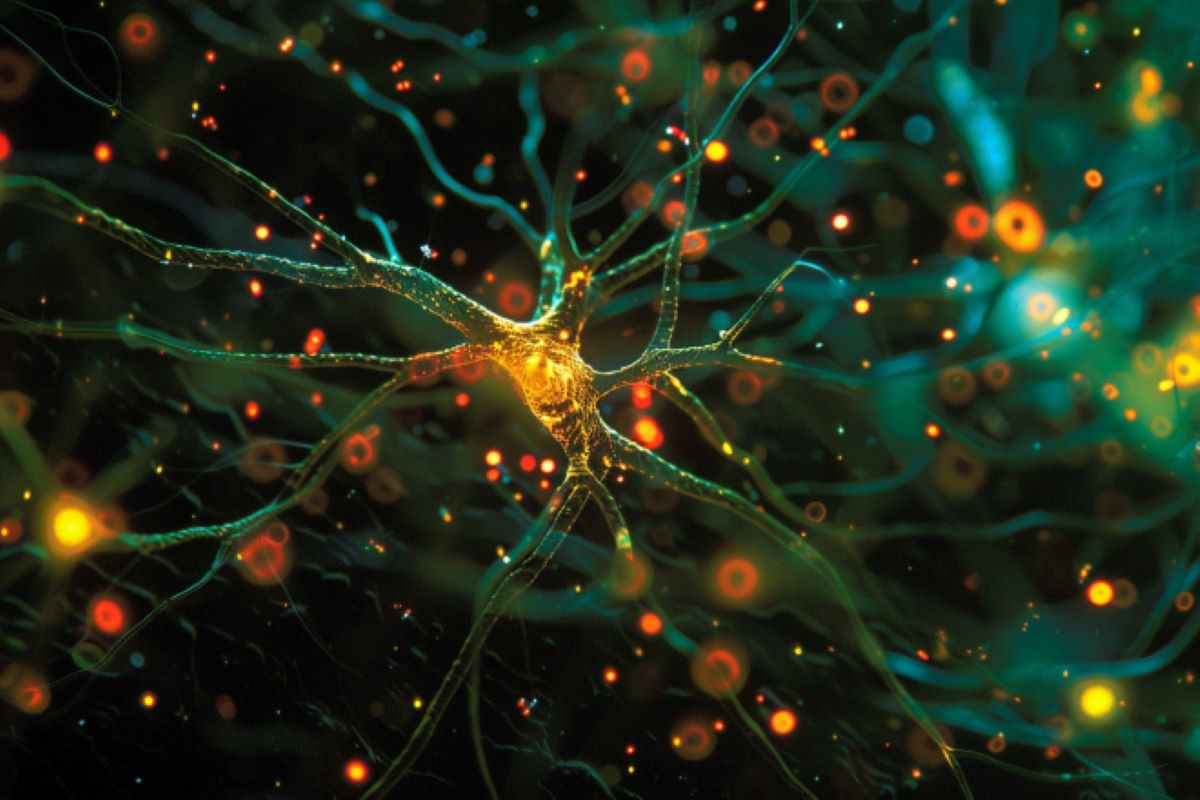Summary: Researchers discovered that different neuron types exhibit distinct patterns of response to electrical stimulation (ES).
Using precise tissue sampling, they found excitatory neurons sync with both slow and fast ES, while inhibitory neurons respond mainly to fast frequencies. These findings could lead to more targeted and effective brain therapies.
The study highlights the potential for customizing ES to treat various neurological disorders.
Key Facts:
- Neurons show distinct, class-specific responses to electrical stimulation.
- Excitatory neurons sync with both slow and fast ES, inhibitory neurons with fast ES.
- Findings could improve targeted therapies for brain disorders like epilepsy.
Source: Allen Institute
New research by scientists at the Allen Institute’s Brain and Consciousness group and Cedars-Sinai offers an unprecedented look at how neurons respond to ES. Far from being uniform, different types of neurons showed distinct patterns of ‘syncing up’ with electrical fields.
These patterns varied depending on the rate at which the ES was delivered.
The findings, published today in Neuron, could help doctors fine tune where, when, and how to apply ES to the brain, said Soo Yeun Lee, Ph.D., the paper’s first author and a Senior Scientist at the Allen Institute.

“With this study, we now have a much better idea of what types of stimulation work for specific cell classes,” she said. “We can use that knowledge to develop more efficient ways of using electrical stimulation to treat disorders.”
Using tissue samples from mice and humans, the research team delivered oscillating waves of ES within tens of micrometers of individual neurons. This extraordinary precision enabled an unprecedented look at electrical stimulation’s impact at a single-cell level.
They observed strong, cell-class-specific responses. Excitatory neurons synchronized firing with both slow and fast stimulation frequencies, while inhibitory neurons primarily responded to fast frequencies.
These class-specific responses are significant, Lee said, because they reveal that adjusting the stimulation frequency allows for the selective targeting of different neurons. That discovery could lead to more precise therapies to modulate neural activity.
For example, inhibitory neurons that express a protein called parvalbumin are implicated in epilepsy and in cognitive dysfunctions, she noted. This study shows that these cell classes are most responsive to certain frequencies. Future treatments could tailor ES to the most effective frequency, potentially improving outcomes and limiting side effects.
Beyond its clinical implications, the study also revealed a universal truth about how neurons function, Lee added. Regardless of cell class, cortical areas, or species, neurons exhibit a remarkable ability to synchronize with an external electric field.
This general property is superimposed on the brain’s dazzling cellular diversity, Lee said—and the newfound understanding of these underlying mechanisms could transform our approach to treating complex brain disorders.
Funding: Research described in this article was supported by award numbers R01NS120300 and R01NS130126 from the National Institute of Neurological Disorders and Stroke of the National Institutes of Health. The content is solely the responsibility of the authors and does not necessarily represent the official views of NIH and its subsidiary institutes.
About this electrophysiology research news
Author: Peter Kim
Source: Allen Institute
Contact: Peter Kim – Allen Institute
Image: The image is credited to Neuroscience News
Original Research: Open access.
“Cell-class-specific electric field entrainment of neural activity” by Soo Yeun Lee et al. Neuron
Abstract
Cell-class-specific electric field entrainment of neural activity
Highlights
- Neurons show robust entrainment to sinusoidal electric fields
- Subthreshold entrainment polarizes the cell membrane across cell classes
- Spike-field entrainment is cell class specific and depends on stimulation frequency
- Field entrainment is seen across neurons in different brain regions and species
Summary
Electric fields affect the activity of neurons and brain circuits, yet how this happens at the cellular level remains enigmatic. Lack of understanding of how to stimulate the brain to promote or suppress specific activity significantly limits basic research and clinical applications.
Here, we study how electric fields impact subthreshold and spiking properties of major cortical neuronal classes.
We find that neurons in the rodent and human cortex exhibit strong, cell-class-dependent entrainment that depends on stimulation frequency. Excitatory pyramidal neurons, with their slower spike rate, entrain to both slow and fast electric fields, while inhibitory classes like Pvalb and Sst (with their fast spiking) predominantly phase-lock to fast fields.
We show that this spike-field entrainment is the result of two effects: non-specific membrane polarization occurring across classes and class-specific excitability properties. Importantly, these properties are present across cortical areas and species.
These findings allow for the design of selective and class-specific neuromodulation.

Sarah Carter is a health and wellness expert residing in the UK. With a background in healthcare, she offers evidence-based advice on fitness, nutrition, and mental well-being, promoting healthier living for readers.







